 W
WThe current flag of Alabama was adopted by Act 383 of the Alabama state legislature on February 16, 1895:The flag of the State of Alabama shall be a crimson cross of St. Andrew on a field of white. The bars forming the cross shall be not less than six inches broad, and must extend diagonally across the flag from side to side." – (Code 1896, §3751; Code 1907, §2058; Code 1923, §2995; Code 1940, T. 55, §5.)
 W
WThe flag of Amsterdam is the official flag for Amsterdam, the capital city of the Netherlands. The current design of the flag depicts three Saint Andrew's Crosses and is based on the escutcheon in the coat of arms of Amsterdam.
 W
WThe flags of the Confederate States of America have a history of three successive designs from 1861 to 1865. The flags were known as the "Stars and Bars", used from 1861 to 1863, the "Stainless Banner", used from 1863 to 1865, and the "Blood-Stained Banner", used in 1865 shortly before the Confederacy's dissolution. A rejected national flag design was also used as a battle flag by the Confederate Army and featured in the "Stainless Banner" and "Blood-Stained Banner" designs. Although this design was never a national flag, it is the most commonly recognized symbol of the Confederacy.
 W
WThe Cross of Burgundy or the Cross of Saint Andrew, a saw-toothed (raguly) form of St. Andrew's cross, was first used in the 15th century as an emblem by the Valois Dukes of Burgundy, who ruled a large part of eastern France and the Low Countries as effectively an independent state. The Burgundian Low Countries were inherited by the Habsburgs, who adopted the flag at the extinction of the Valois ducal line and continued to use it as one of their many symbols up to the 18th century. With the Burgundian Habsburgs coming to power in Spain in the 16th century, the emblem served as a naval ensign of the Spanish Empire up to 1701, and up to 1843 as the land battle flag, acquiring a global impact throughout Europe and the Americas in the possessions of the Spanish crowns of Castile and Aragon. It is found nowadays in different continents and still appears on regimental colours, badges, shoulder patches and company guidons. The use of the emblem in a variety of contexts, in a number of European countries and in the Americas, reflects the historical extent of Burgundian, Habsburg, and Spanish territories.
 W
WThe East Lothian flag is the flag of the Scottish county of East Lothian (Haddingtonshire). It was registered with the Flag Institute on 13 December 2018 following its announcement at a reception hosted by the Lord Provost.
 W
WThe Russian Navy ensign, also known as the St Andrews's flag, was the ensign of the Navy of the Russian Empire, and is the naval ensign of the Russian Federation since 1992, and the banner of the Navy of the Russian Federation since 2000.
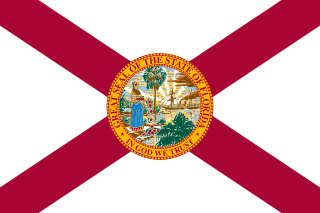 W
WThe flag of Florida, often referred to as the Florida flag, is the state flag of Florida. It consists of a red saltire on a white background, with the state seal superimposed on the center. The flag's current design has been in use since May 21, 1985, after the Florida state seal was graphically altered and officially sanctioned for use by state officials. In 2001, a survey conducted by the North American Vexillological Association (NAVA) placed Florida's state flag 34th in design quality out of the 72 Canadian provincial, U.S. state and U.S. territorial flags ranked. It is one of three U.S. state flags to feature the words "In God We Trust", with the other two being those of Georgia and Mississippi.
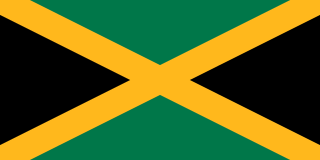 W
WThe flag of Jamaica was adopted on 6 August 1962, the country having gained independence from the British-protected Federation of the West Indies. The flag consists of a gold saltire, which divides the flag into four sections: two of them green and two black. It is currently the only national flag that does not contain a shade of the colors red, white, or blue.
 W
WThe flag of Jersey is composed of a red saltire on a white field. In the upper quadrant the badge of Jersey surmounted by a yellow "Plantagenet crown". The flag was adopted by the States of Jersey on 12 June 1979, proclaimed by Queen Elizabeth II on 10 December 1980 and first officially hoisted on 7 April 1981.
 W
WMercia was one of the kingdoms of the Anglo-Saxon Heptarchy. The name is a Latinisation of the Old English Mierce or Myrce, meaning "border people". Mercia dominated what would later become England for three centuries, subsequently going into a gradual decline while Wessex eventually conquered and united all the kingdoms into the Kingdom of England.
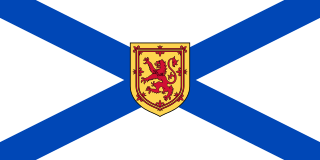 W
WThe flag of Nova Scotia consists of a blue saltire on a white field defaced with the royal arms of Scotland. Adopted in 1929 after a royal warrant was issued, it has been the flag of the province since January 19 of that year. It is a banner of arms modelled after the province's coat of arms. Utilized as a pennant since 1858, it was officially recognized under primary legislation as Nova Scotia's flag in 2013. When flown with the flags of other Canadian provinces and the national flag, it is fourth in the order of precedence.
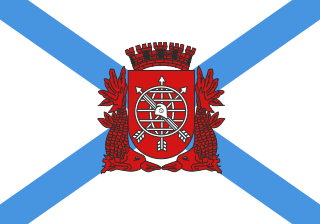 W
WThe flag of the City of Rio de Janeiro or flag of São Sebastião do Rio de Janeiro consists of a white rectangle with a blue saltire behind the coat of arms of the city of Rio de Janeiro, which is displayed red in the center. Its basic design has changed little since it was adopted on July 8, 1908, except during period from 1960 to 1975 when the municipality of Rio de Janeiro was known as Guanabara State. It resembles the flags of Galicia and the Russian Navy.
 W
WThe Saint Alban's Cross is a yellow saltire on a blue field. It is found in several flags, notably that of the Cathedral and Abbey Church of St Alban, previously a Benedictine monastery, and the city of St Albans, Hertfordshire.
 W
WSaint Patrick's Saltire or Saint Patrick's Cross is a red saltire on a white field. In heraldic language, it may be blazoned "argent, a saltire gules". The Saint Patrick's Flag is a flag composed of Saint Patrick's Saltire. The origin of the saltire is disputed. Its association with Saint Patrick dates from the 1780s, when the Anglo-Irish Order of Saint Patrick adopted it as an emblem. This was a British chivalric order established in 1783 by George III. It has been suggested that it derives from the arms of the powerful Geraldine or FitzGerald dynasty. Most Irish nationalists and others reject its use to represent Ireland as a "British invention" "for a people who had never used it".
 W
WA saltire, also called Saint Andrew's Cross or the crux decussata, is a heraldic symbol in the form of a diagonal cross, like the shape of the letter X in Roman type. The word comes from the Middle French sautoir, Medieval Latin saltatoria ("stirrup").
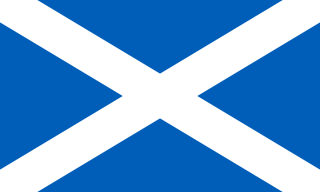 W
WThe flag of Scotland is the national flag of Scotland, which consists of a white saltire defacing a blue field. The Saltire, rather than the Royal Standard of Scotland, is the correct flag for all private individuals and corporate bodies to fly. It is also, where possible, flown from Scottish Government buildings every day from 8:00 am until sunset, with certain exceptions.